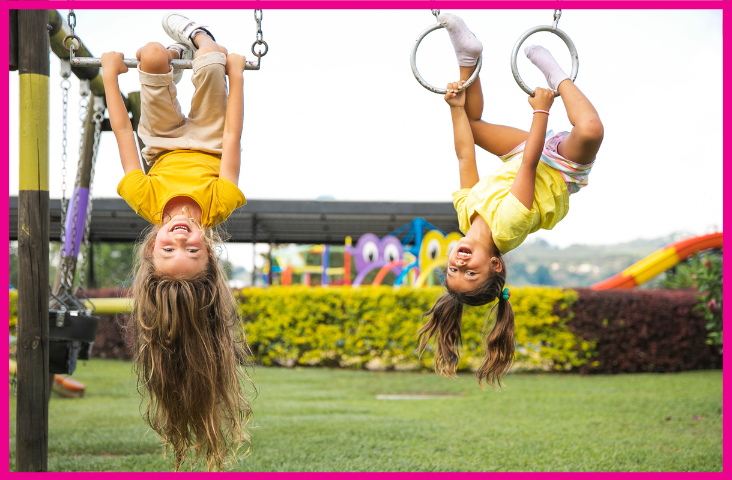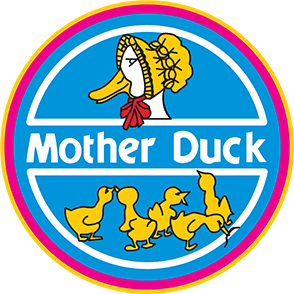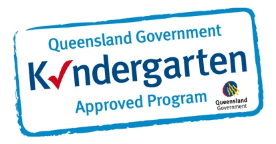
Why you should stop telling your kids to “Be Careful”
It’s our job as parents to keep our kids safe from harm, right? And we take that job pretty seriously. Which is why, if you spend a lot of time at places like parks, playcentres, and well…anywhere you find children, you will inevitably hear parents crying out for them to “Be Careful!”
But just how helpful is it to tell your child to “Be Careful”?
Well, not very actually.
It’s a phrase that slips easily out of the mouths of parents everywhere. And it’s well-meaning. But it does very little to reduce the risk in any situation. And it definitely doesn’t keep children safe.

The problem with “Be Careful”
“Be Careful” can actually cause more problems for our children than it solves! Here are 3 important reasons to consider removing the phrase from your vocabulary altogether.
1) It’s ineffective
A phrase like “Be Careful” doesn’t really tell our kids anything meaningful. It might ease our own anxiety and make us feel like we’re doing something to keep our children, or others safe. But the reality is, it doesn’t keep our kids safe at all. Telling a child to be careful while they’re climbing a tree won’t prevent them from falling out of it!
And that’s because “Be Careful” doesn’t tell a child what we want them to do (or not do). It doesn’t give them any information about the situation they’re in. And very often, they simply tune it out or ignore it anyway, especially if we say it often!
2) It communicates danger
“Be careful” sends a child the message that something is dangerous. After all, if you’re telling them to be careful, there must be something to be careful of, right? But it doesn’t tell them how they should respond, or how they can remain safe in the situation. So often, it just increases their anxiety. And eventually, children who hear “be careful” often enough, might begin to view the world as an inherently dangerous place. They may become anxious about taking risks or trying anything new, which can have a detrimental impact on their development.
3) It increases risk
Telling a child to be careful can sometimes cause them to lose focus and therefore increase the risk in a situation. For example, yelling “Be careful” while they are focusing on a complex or difficult task may startle them and cause them to fall, slip or make a mistake that leads to them getting hurt! High levels of anxiety and stress also impact performance. So if your child feels overly nervous about an activity, they are actually more likely to make mistakes, second guess themselves and their decisions, and ultimately engage in the activity in an unsafe way.

What to say instead of “Be Careful”
So saying “Be Careful” is out. But you still want your kids to be safe, right? So what can you say instead? Lots of things actually! Here are some more helpful alternatives.
Give specific instructions
“Be careful” is far too vague. So instead, give your child specific instructions. Tell them HOW to be careful. What do you actually want them to do? What you tell your child will depend on the situation and what they are doing of course, but here are some ideas:
- “Stay focused on what you’re doing”
- “Slow down”
- “Take your time”
- “Use two hands”
- “Hold on tight”
- “Take that outside where you have more space.”
These statements let your child know exactly what to do so there is no confusion. It helps you minimise the risk to both your child and the people around them and encourages them to be safer. It also helps them understand that the way they behave matters, and that they have some control over the outcome.

Help them build awareness so they can evaluate the risk themselves
Children need to do risky things. This is how they learn about their limits, build confidence, develop resilience and even work on emotional regulation skills. So rather than trying to eliminate all risks for our children, we can instead, help them learn how to evaluate risks themselves. We can do this by bringing their awareness to the details of their situation.
- “Do you feel safe/scared/excited?”
- “Do you feel steady/balanced/secure?”
- “Do you have enough space?”
- “Do you see…your friend behind you, the cars on the road etc”
- “Does that branch/rope/tyre etc feel strong enough to hold you?”
- “Do you notice…the fire nearby, the slippery rocks, the sticks on the ground?”
When we help children notice what is happening both within them and around them, we teach them WHAT to focus on in a risky situation, and what kind of things they might need to consider. But we also teach them to trust themselves – their instinct, their feelings, and their judgment. Their environment and their bodies are both giving them important information about the safety of the situation they are in – when we teach them to notice both, we help them learn how to evaluate risk, so they can then take action to minimise it.

Encourage problem-solving
Once children have evaluated the risk in a situation, they can take actions to reduce or manage it. For this, they need to know the skill of problem-solving. We can support children to learn this skill by encouraging them to think of solutions themselves rather than jumping in to give them answers or focusing only on all of the problems or dangers in the situation. Instead of “You might fall!”, we can encourage children to think about where they might place their feet as they climb down.
- “What’s your plan/next move?”
- “Where will you…put your foot, play that game etc”
- “How will you…get down, get up etc”
- “Who will go with you/help you/meet you?”
- What can you use to…test that branch/get across/keep you steady?”
When we allow children to come up with solutions themselves, we help them get better at evaluating risk and managing their own safety. This empowers children and helps them feel capable. We want children to feel confident managing risks, and to know that there are ways they can engage in risky activities, safely. This helps them learn their limits and means they are far less likely to make reckless mistakes or get themselves into situations that put them or others at risk.
Let them know you are there to support them
As important as it is for kids to take risks, and learn how to manage their safety, it is equally important for them to know that when they take a risk and it doesn’t work out – we’re there to help them. Kids need to know that they can make mistakes, fall down, be unsure, get stuck, or change their minds and that we will be there to support them no matter what.
- “I’m here if you need help”
- “I’m watching”
- “I know you can do this”
- “What do you need from me?”
Having us there helps kids feel safer. And knowing we believe in them, helps them believe in themselves. Kids who have confidence, move with confidence, make decisions with confidence and assess risk with confidence. Kids with confidence make good decisions. Safe decisions.

When we get rid of “Be careful” and replace it with the ideas above, what we’re saying to our kids is, yes this situation does require thought, and there are some risks involved, but I trust you to manage that risk. We are telling our kids they are capable and competent and they have the skills they need. We are helping them understand that they have some control over what happens. And that is so much more helpful, so much more empowering than just, “Be Careful”.
Sarah Conway is a child and adolescent psychologist, mother of 4, and founder of Mindful Little Minds. She has over 15 years of experience working in mental health with children, teenagers, and families. Sarah’s mission is to help parents move away from punitive parenting strategies and towards mindful, intentional parenting that builds emotional intelligence in kids and parents alike. As a busy mum herself, she knows firsthand how difficult mindful parenting can be, particularly when it was never modeled by our own parents. That’s why she provides parents and children with simple, practical strategies and tools that help them learn to manage emotions – together. She believes that changing the way we parent will change the world.


